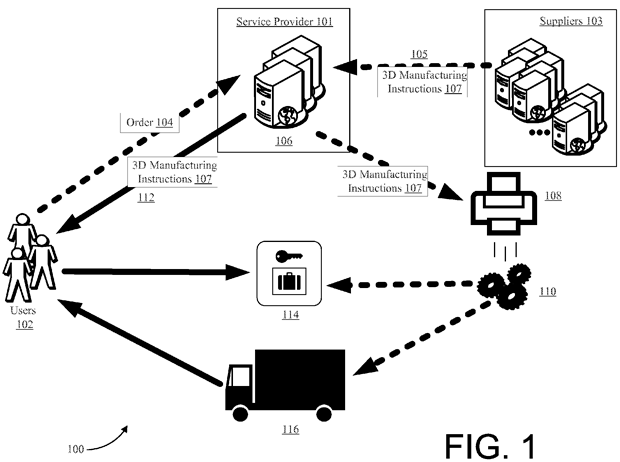With Its Drone Delivery On Hold, Amazon Banks On Delivery Trucks With Onboard 3D Printers
The latest milestone in Amazon’s quest to get products to your door faster is going to involve trucks that can print items on the way to your house. Amazon filed a patent this week with the United States Patent and Trademark Office (USPTO) that envisions delivery trucks bearing 3D printers, rather than boxes.
The patent lays out a fairly simple plan. A customer places an order, which is directed to a local Amazon truck. “A manufacturing apparatus can be selected to manufacture the item based on the 3D manufacturing instructions,” the patent abstract reads. At that point, the truck heads to your house with your 3D-printed components in tow. The potential for such an operation would be limited by the size of the 3D printers and by the types of products that could be easily manufactured. The WSJ cites replacement car parts as just one possible avenue to pursue with mobile 3D printing.
Amazon also see 3D printing as a way to reduce inventory costs and increase customer satisfaction. "Increased space to store additional inventory may raise costs for the electronic marketplace," stated Amazon in the patent filing. "Additionally, time delays between receiving an order and shipping the item to the customer may reduce customer satisfaction and affect revenues generated."
Amazon regularly develops new ideas for getting products to customers faster. One of those ideas, known as “anticipatory shipping,” involved shipping orders to certain customers – before they placed the order. The idea was that customers who made regular orders would receive their orders faster if Amazon preemptively put the products onto the truck and shipped it.
Amazon hasn’t started using anticipatory shipping yet, nor has it been able to get its planned drone delivery program off the ground yet. Amazon Prime Air has the potential to get some products to customers in 30 minutes, if it can find a way to comply with the FAA’s new rules.


